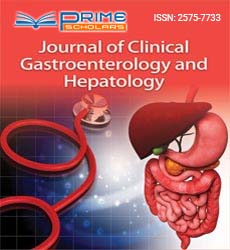Perspective - (2024) Volume 8, Issue 4
The Anatomy and Function of the Oesophagus: Insights into Its Role in Digestion and Implications for Esophageal Disorders
Muhammad Wei*
Department of Gastroenterology, University of Medical Sciences, Australia
*Correspondence:
Muhammad Wei,
Department of Gastroenterology, University of Medical Sciences,
Australia,
Email:
Received: 31-Jul-2024, Manuscript No. IPJCGH-24-21631;
Editor assigned: 02-Aug-2024, Pre QC No. IPJCGH-24-21631 (PQ);
Reviewed: 16-Aug-2024, QC No. IPJCGH-24-21631;
Revised: 21-Aug-2024, Manuscript No. IPJCGH-24-21631 (R);
Published:
28-Aug-2024, DOI: 10.36648/2575-7733.8.4.40
Introduction
The oesophagus is a muscular tube that serves as a crucial
component of the digestive system, connecting the throat to
the stomach. It plays an essential role in transporting food
and liquids from the mouth to the stomach, ensuring that
digestion proceeds efficiently. Understanding the anatomy
and functioning of the oesophagus is vital for appreciating
its role in health and disease, as well as the various disorders
that can affect this organ. Anatomically, the oesophagus is
approximately centimetres long in adults and is divided into
three main sections: the cervical, thoracic, and abdominal
oesophagus. The upper portion, the cervical oesophagus, is
located in the neck and connects to the pharynx. This section is
primarily composed of striated muscle, allowing for voluntary
control during swallowing. The thoracic oesophagus runs
through the chest and is surrounded by the trachea and aorta,
while the abdominal oesophagus enters the stomach through
the diaphragm.
Description
The lower esophageal sphincter, a critical component at the
junction of the oesophagus and stomach, prevents the backflow
of stomach contents into the oesophagus, thereby protecting
the esophageal lining. The primary function of the oesophagus
is to transport food from the mouth to the stomach through a
series of coordinated muscle contractions known as peristalsis.
When a person swallows, a series of muscle contractions
push the food bolus down the oesophagus. The oesophagus
is lined with mucosal tissue that produces mucus, which
aids in lubricating the food as it travels down. The process is
largely involuntary, although individuals can initiate swallowing
voluntarily. Once the food reaches the stomach, the lower
esophageal sphincter relaxes, allowing the bolus to enter.
Disorders of the oesophagus can significantly impact digestion
and overall health. One common condition is gastroesophageal
reflux disease which occurs when stomach acid frequently
flows back into the oesophagus. This backflow, or reflux, can
cause symptoms such as heartburn, regurgitation, and difficulty
swallowing. Individuals with achalasia often experience
regurgitation and chest pain, and the condition may require
medical intervention to relieve symptoms, including balloon
dilation or surgery. Esophageal cancer is another serious
concern, with risk factors including chronic smoking, and heavy
alcohol consumption. The oesophagus is also susceptible to
other conditions, such as esophageal strictures, which are
narrowing of the oesophagus often caused by inflammation
or scarring. This narrowing can lead to difficulty swallowing
and the sensation of food getting stuck. Similarly, esophageal
varices, which are enlarged veins in the oesophagus resulting
from portal hypertension, pose a significant risk of bleeding
and require careful monitoring and management.
Conclusion
To maintain esophageal health, individuals are encouraged
to adopt a balanced diet, avoid smoking, and limit alcohol
consumption. Maintaining a healthy weight can also help
prevent conditions. In cases of persistent symptoms, such
as difficulty swallowing or chronic heartburn, individuals
should seek medical evaluation to identify any underlying
issues and receive appropriate treatment. In conclusion, the
oesophagus is a vital organ in the digestive system, responsible
for the efficient transport of food and liquids to the stomach.
Understanding its anatomy and function sheds light on the
various disorders that can affect oesophageal health. With
conditions ranging from esophageal cancer, awareness and
early intervention are critical for preventing complications
and ensuring overall well-being. As research continues to
advance, a deeper understanding of esophageal disorders will
lead to improved treatment strategies and enhanced patient
outcomes.
Citation: Wei M (2024) The Anatomy and Function of the Oesophagus: Insights into its Role in Digestion and Implications for
Esophageal Disorders. J Clin Gastroenterol Hepatol. 8:40.
Copyright: © 2024 Wei M. This is an open-access article distributed under the terms of the Creative Commons Attribution Li�cense, which permits unrestricted use, distribution, and reproduction in any medium, provided the original author and source
are credited.

